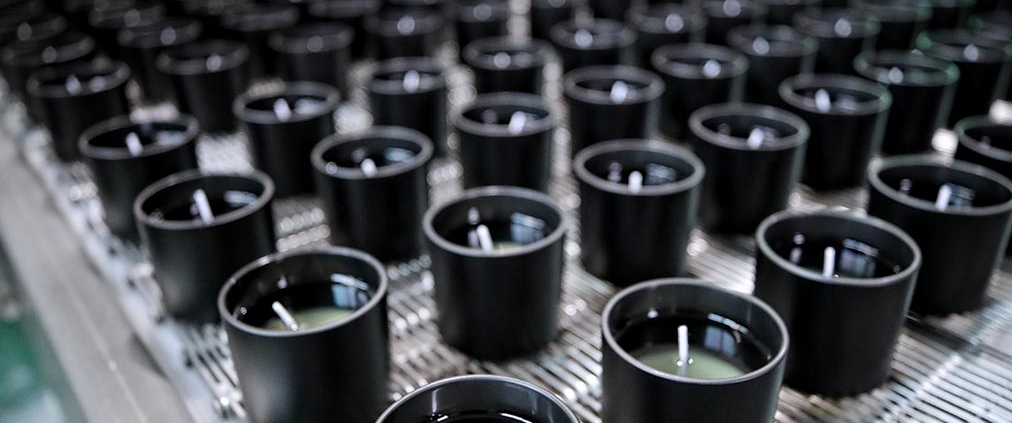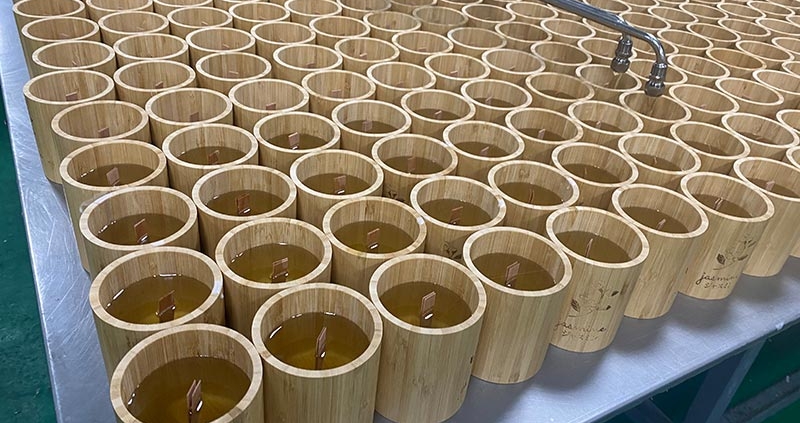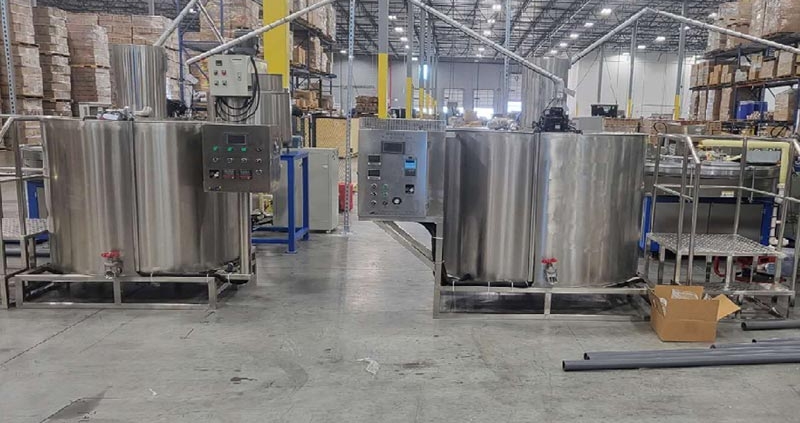The art of candle making has evolved significantly, with modern technology now playing a crucial role in ensuring efficiency, precision, and superior quality. Yide Machinery has revolutionized the industry with its state-of-the-art candle filling equipment, allowing manufacturers to produce premium scented candles with unmatched consistency and efficiency.
The Candle Making Process with Yide’s Equipment
A well-crafted candle starts with meticulous preparation and precision. In Yide’s advanced candle manufacturing process, the wood wick is securely attached, ensuring a stable and even burn. Once the wick is properly positioned, liquid wax is poured into jars with high efficiency, thanks to Yide’s advanced automated filling technology.
By utilizing precision temperature control and automated pouring mechanisms, Yide’s machinery guarantees that each jar is filled with exactly the right amount of wax, minimizing waste while maintaining product consistency.
Cutting-Edge Technology for Superior Candle Production
Yide’s candle-making equipment is designed to streamline production without compromising quality. The precision-engineered filling system ensures that:
- Wax is evenly distributed, preventing air bubbles and ensuring a smooth surface.
- The fragrance is well-preserved, enhancing scent diffusion for a luxurious aroma.
- The wax burns consistently, extending the candle’s lifespan and improving user experience.
By leveraging automation and precision, Yide candle machines significantly increase production efficiency, enabling manufacturers to scale operations while maintaining high-quality standards.
Boosting Productivity & Reducing Costs
One of the biggest challenges in candle production is balancing efficiency with craftsmanship. Yide’s solutions help manufacturers:
- Improve production speed through high-efficiency automated filling and wick-centering systems.
- Reduce labor costs by minimizing manual processes and maximizing automation.
- Ensure consistent quality with precision pouring and temperature control, eliminating errors.
For businesses looking to expand their luxury candle production, Yide’s equipment offers a cost-effective and scalable solution to meet increasing market demands.
Supporting the Growing Market for Premium Candles
The demand for luxury and artisanal candles continues to grow, with consumers seeking high-end, long-lasting fragrances for their homes. Yide Machinery provides manufacturers with the tools they need to keep up with this demand, delivering high-quality, premium candles that stand out in the market.
With a strong reputation for reliability, innovation, and efficiency, Yide has become a trusted partner for candle manufacturers worldwide. Whether producing small-batch artisanal candles or large-scale commercial orders, Yide’s advanced filling equipment ensures a seamless production process with exceptional results.
Why are there three different wax melting tanks and production processes for melting, storage, and formulation?
Applicable customer groups: Medium and large enterprises with large demands for melting wax formulas
Why do this?
Because there are many material formulas and the melting points of the materials are different. Most customers have at least three material ratios, A (80%) + B (10%) + C (10%). For example, if the customer uses paraffin, the temperature of paraffin melting must reach 90-100℃, the temperature of soybean wax melting is 80-85℃, other formulas may be 60-65℃, or there are high melting point materials, which need to reach 120-150℃ to melt. In this case, because the low melting point material and the high melting point material are heated together, the low melting point material will be heated repeatedly, and the material will deteriorate. It is recommended that customers use different wax melting tanks to melt separately, which can well ensure the quality of the material, will not affect the formula, and greatly ensure the quality of the finished product.
Process:
After melting separately, the melted materials are stored in an warming tank to maintain the required temperature of the materials. Then, they are extracted into the formula wax melting barrel for stirring using a metering wax extraction pump according to the different proportions of the materials. The proportions of different materials required to be extracted can be set on the PLC touch screen of the wax melting barrel, which is convenient, fast and accurate, and does not require manual weighing for proportioning, saving labor and time.
Advantages:
The melting and storage formula solution is a very systematic professional solution for material melting, heat preservation and proportioning, which can greatly improve the efficiency and quality of wax melting, greatly guarantee the quality of wax, improve the accuracy of proportioning, realize scientific wax melting, wax storage and formula, and greatly improve production efficiency and product quality.
The production of scented candles involves unique material composition, precise processes, and rigorous safety standards, especially as consumer demand for eco-friendly products increases. Here are some key aspects:
- Material Selection and Environmental Impact
The main ingredients for scented candles include wax, fragrance, and wicks. Eco-conscious producers often use natural waxes like soy, coconut, or beeswax instead of paraffin, which reduces smoke and toxic residue upon burning. Natural essential oils are favored for scent, offering therapeutic benefits, but they can be more costly compared to synthetic fragrances, which provide long-lasting scents but lack natural therapeutic effects.
- Fragrance Ratio and Scent Throw
The ratio of fragrance to wax, as well as the timing of fragrance addition, are crucial. Typically, fragrances are added at around 5-10% of the total wax volume, at a specific temperature, to ensure even, long-lasting scent throw. Different wax and fragrance combinations yield different scent strengths and burning durations, requiring extensive testing to optimize scent diffusion.
- Production Process and Cooling
Scented candle production requires heating, mixing, and cooling steps. The wax must be melted to an ideal temperature to blend with the fragrance effectively, while cooling rates are carefully controlled to prevent surface cracks or bubbles, ensuring a smooth appearance.
- Safety Testing and Wick Choice
Wick selection impacts flame height and smoke levels, with options like cotton and wooden wicks each lending different qualities to the burning experience. Wicks must be tested for optimal length and material to prevent excessive soot. Burn tests are essential to confirm the candle burns evenly, releases scent well, and maintains safety standards.
- Market Demand and Innovation
Consumers increasingly favor aesthetically pleasing and unique designs, so scented candles often feature creative fragrances, eco-friendly packaging, and visually appealing containers. Innovations continue to cater to eco-conscious preferences and elevate the sensory experience without compromising on safety and quality.




